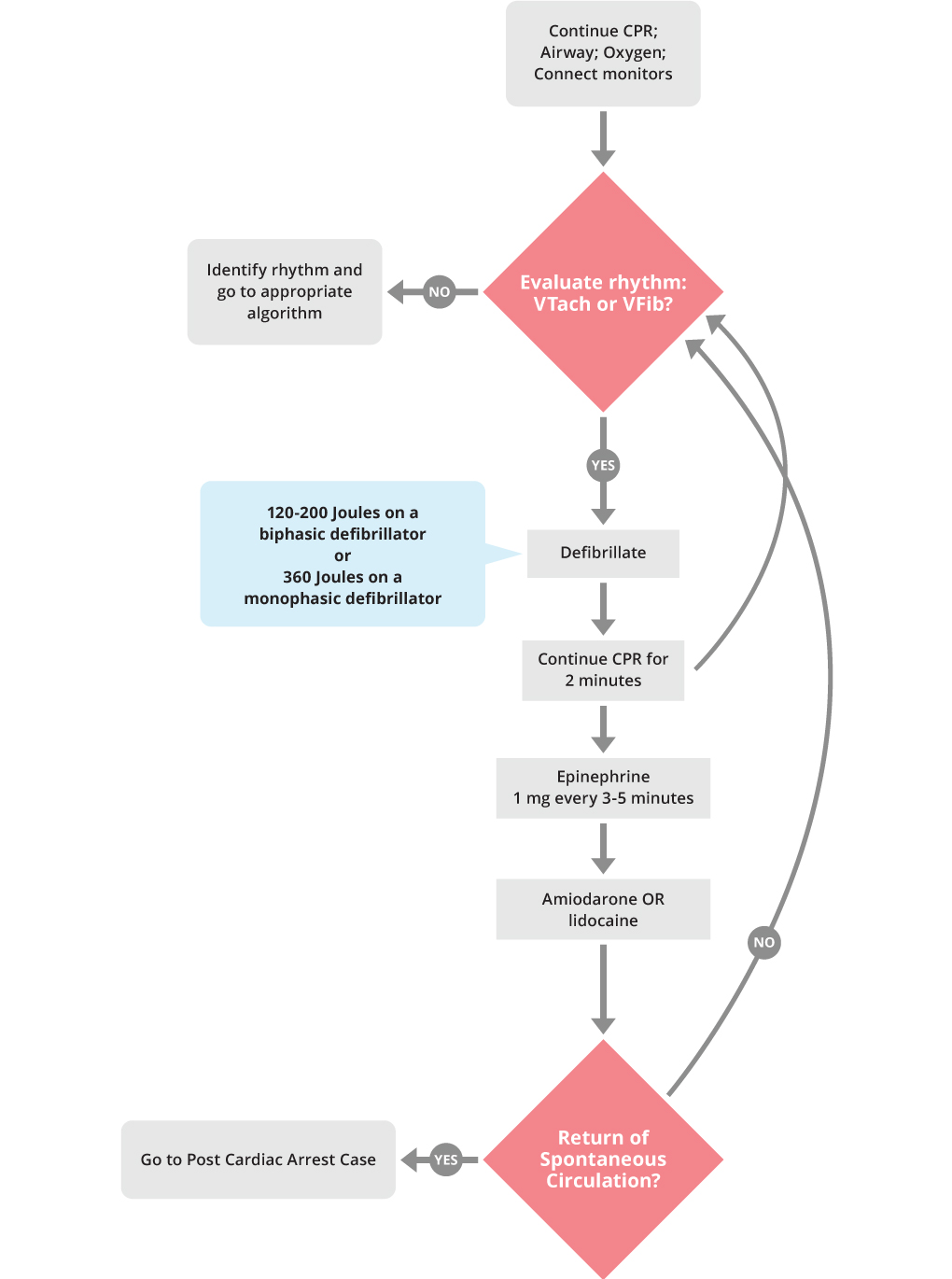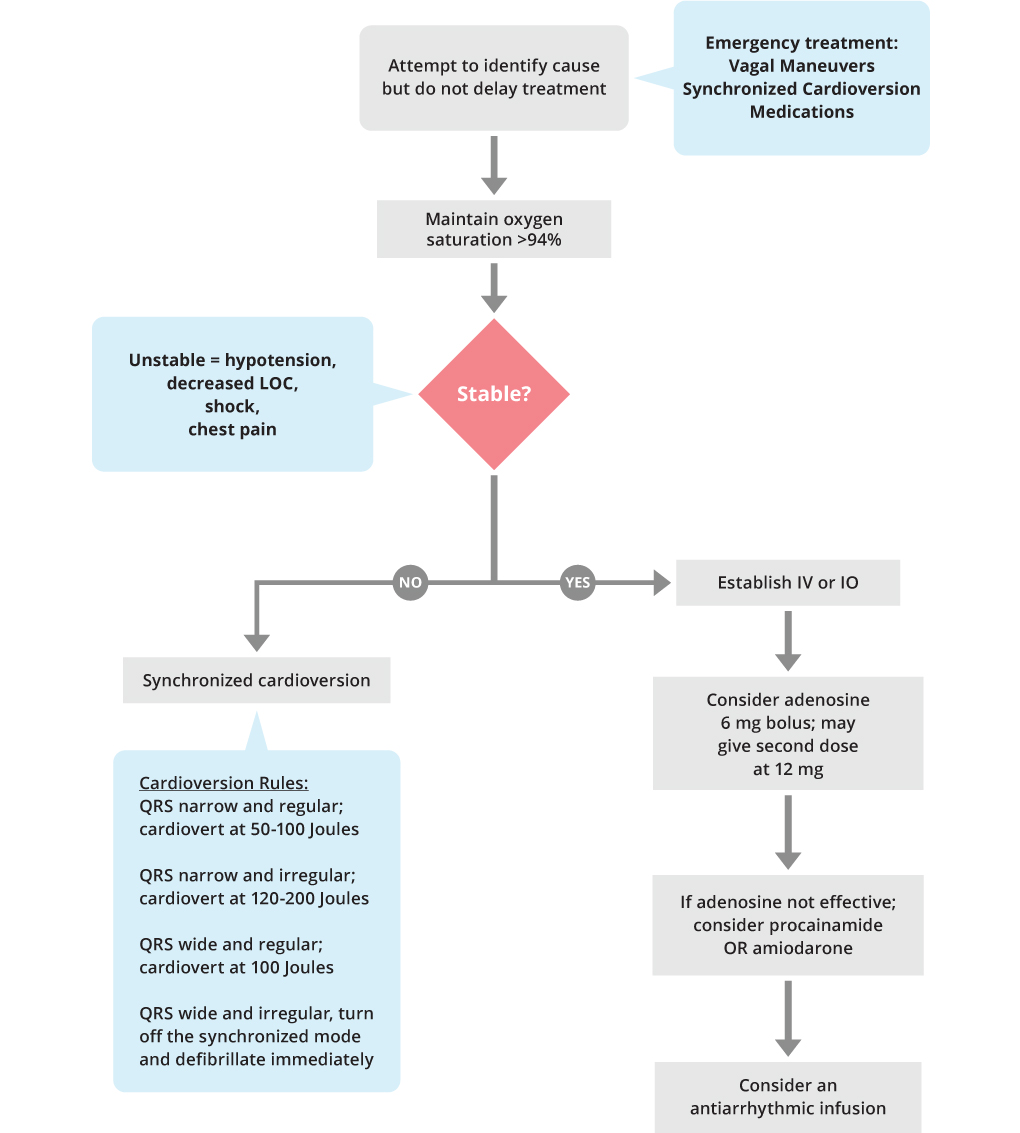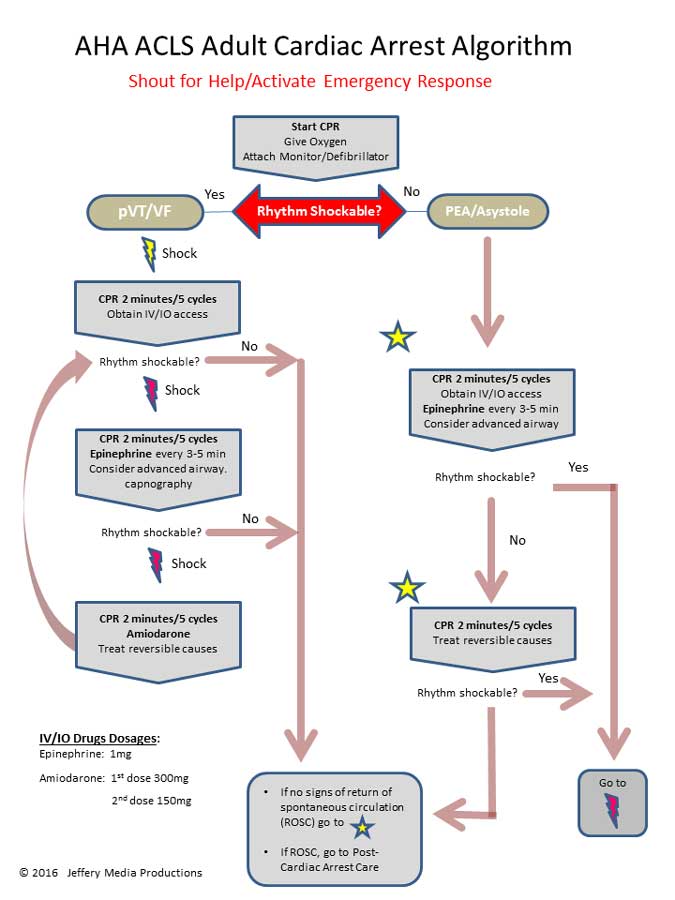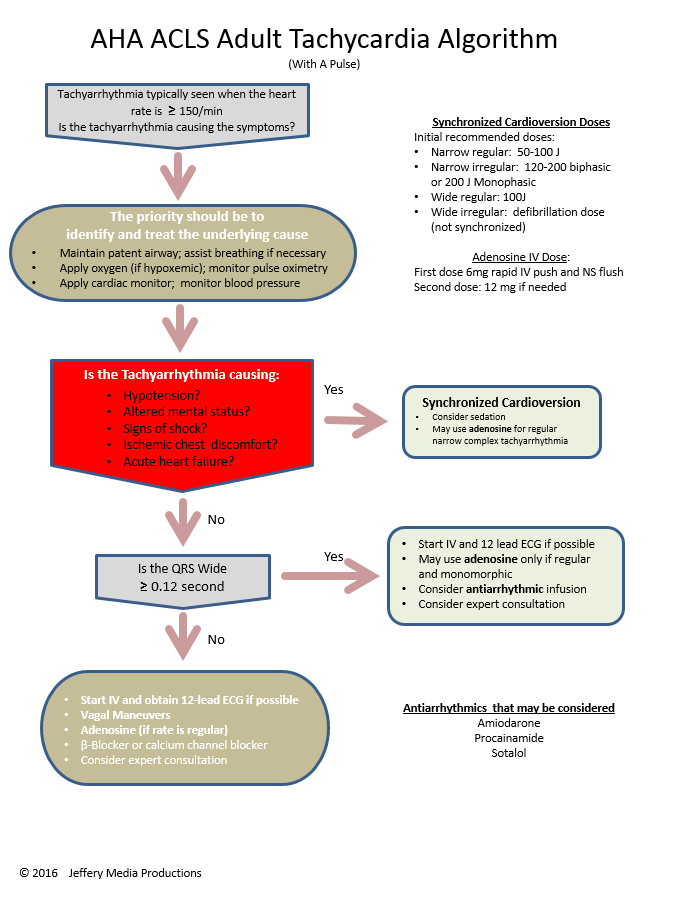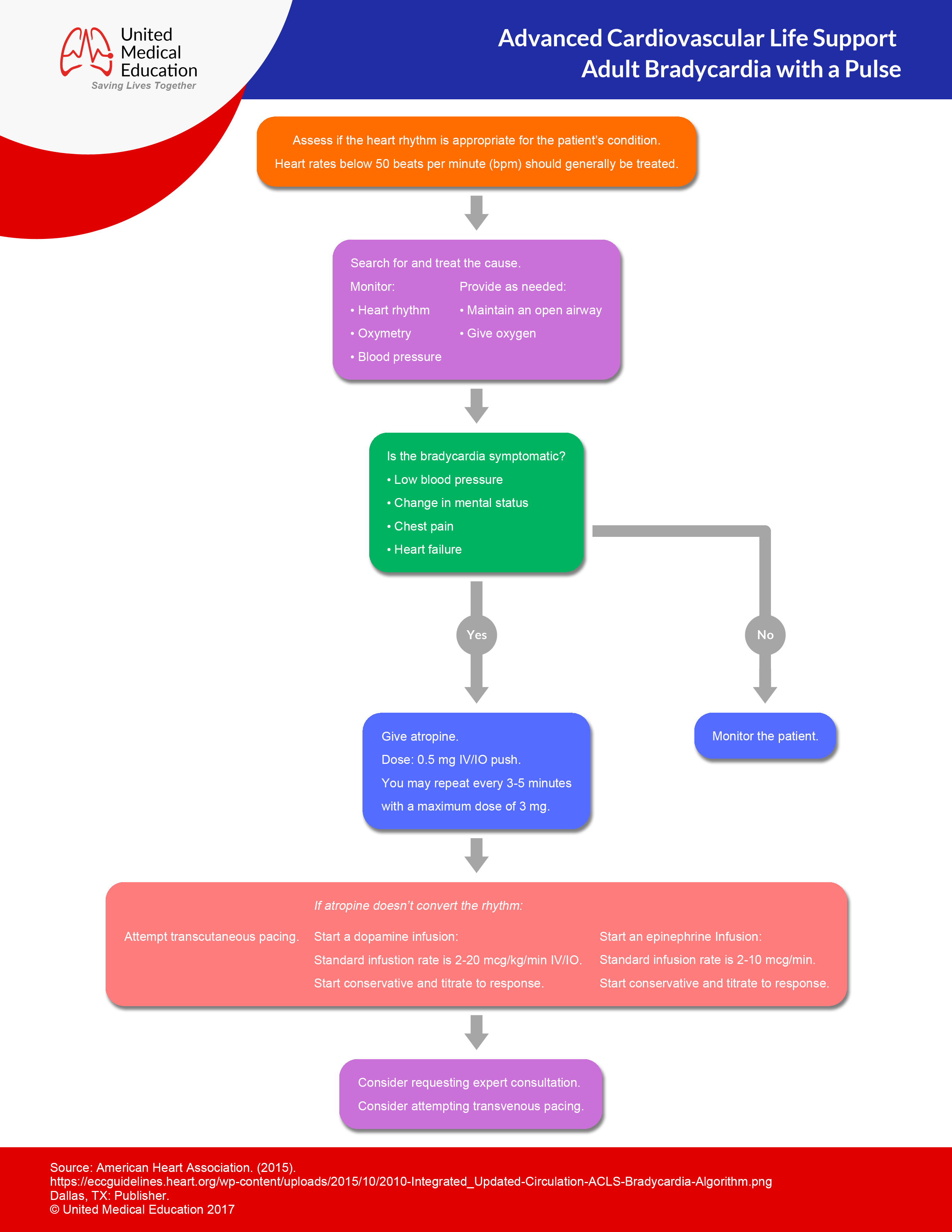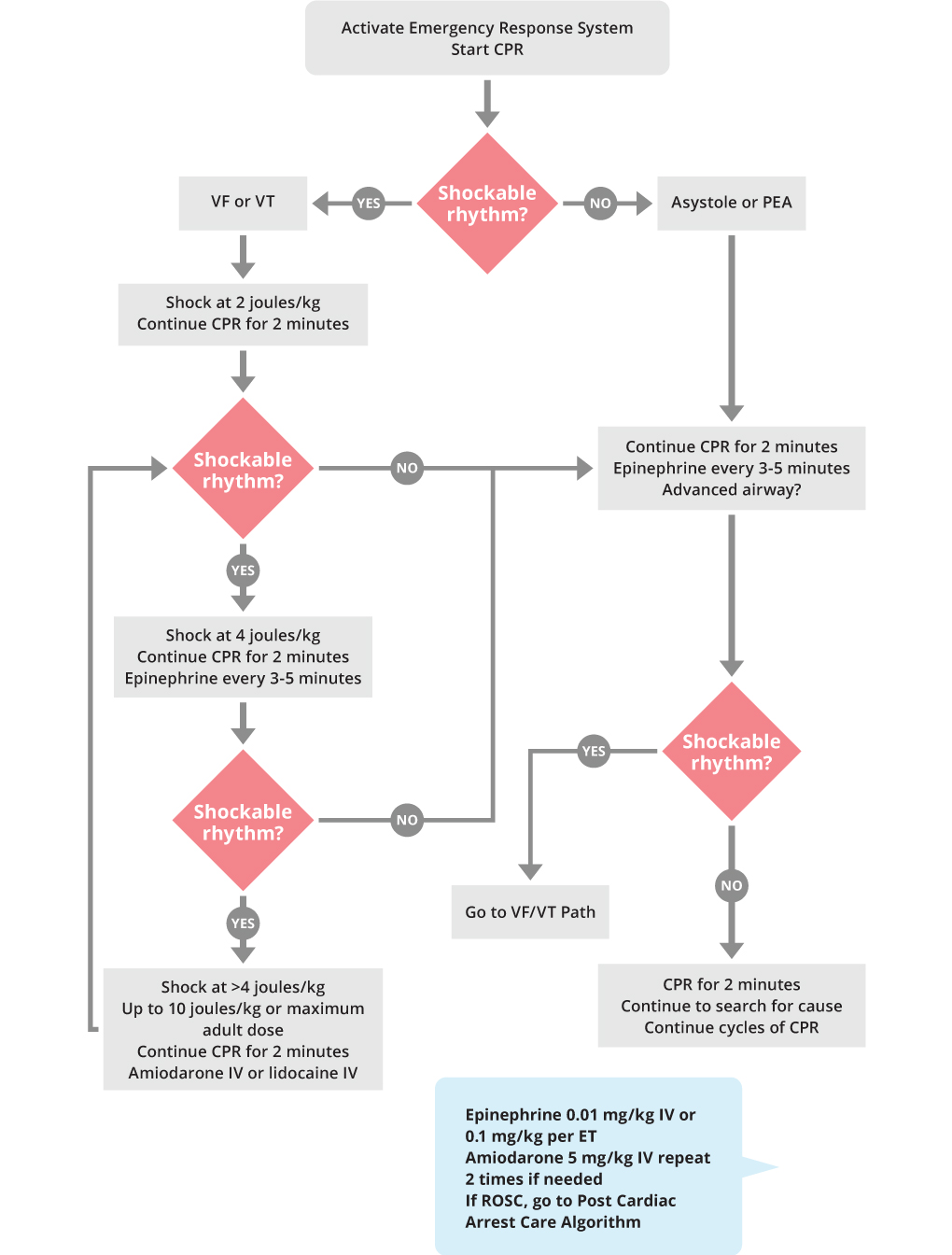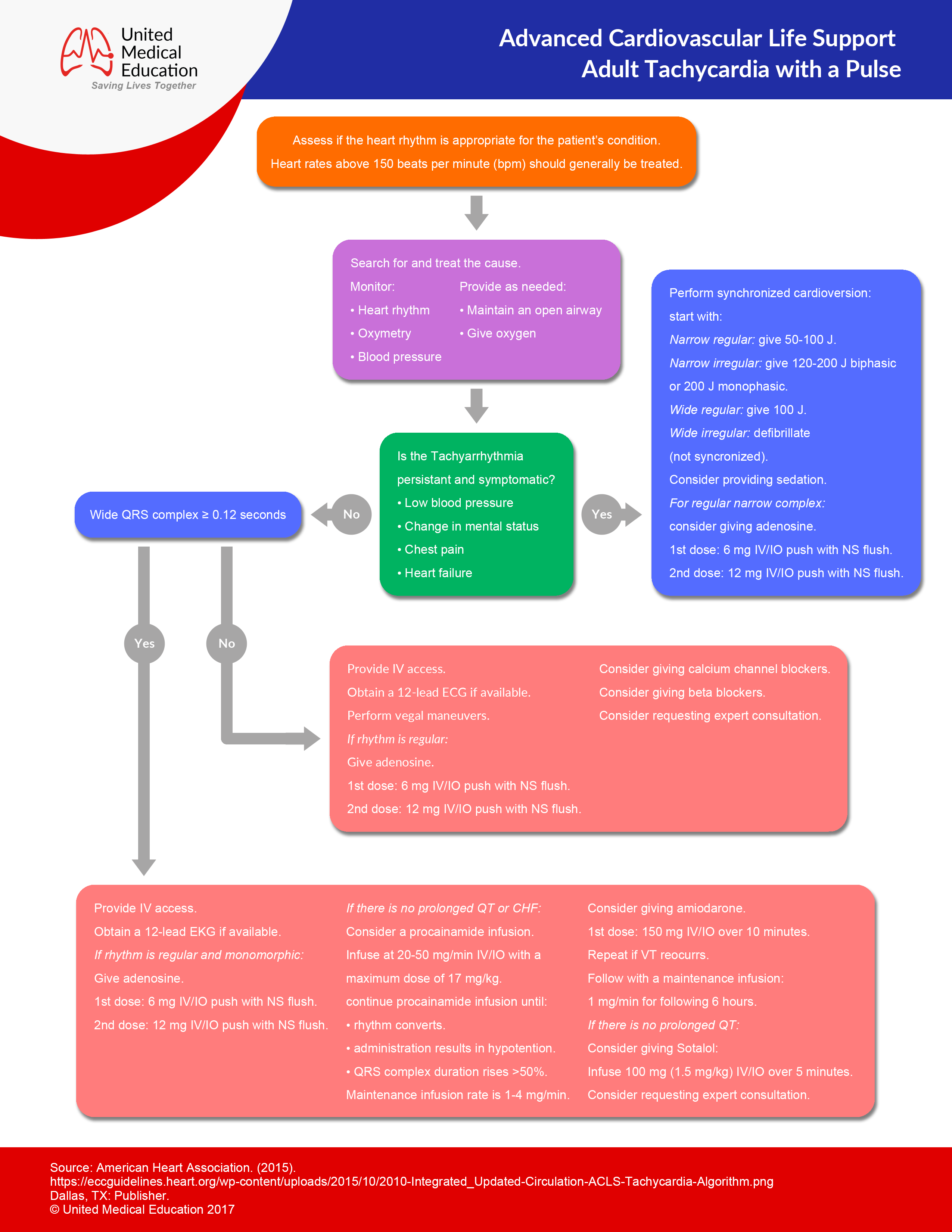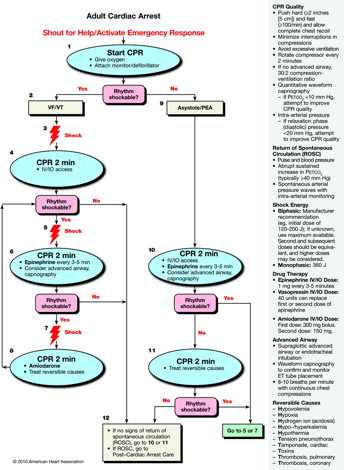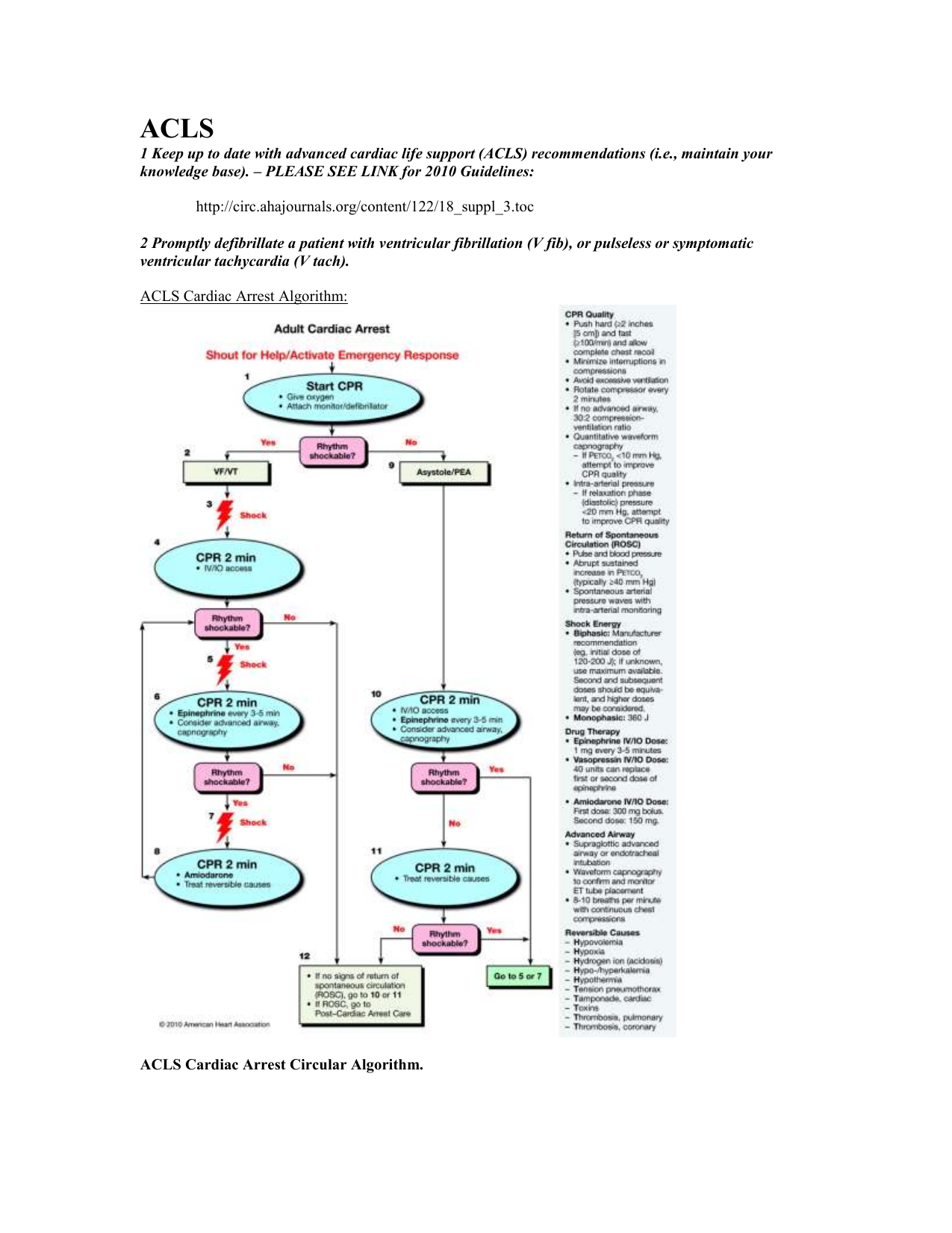V Tach Algorithm Acls

Acls cardiac arrest vtach and vfib algorithm.
V tach algorithm acls. Acls tachycardia algorithm the acls tachycardia algorithm is used for patients who have marked tachycardia usually greater than 150 beats per minute and a palpable pulse. The treatment of vf and pulseless vt ventricular fibrillation and pulseless ventricular tachycardia is included in the cardiac arrest algorithm. As a free resource for our visitors this page contains links to sample algorithms for the main aha advanced cardiac life support cases. Professionally organized advanced cardiac life support interventions and medications.
One of the crucial components of effective acls training is a familiarity with the major algorithms for different patient andor provider scenarios. Complete acls algorithms for 2019. The key to managing a patient with any tachycardia is to check if pulses are present decide if the patient is stable or unstable and then treat the patient based on the patients condition and rhythm. Pulseless ventricular tachycardia vt like ventricular fibrillation vf is a shockable rhythm and treated with the pulseless arrest algorithm.
Tachycardia algorithm provided by acls certification institute that shows the steps for rescuers to take when an adult presents with symptomatic tachycardia with pulses. Perform the initial assessment. Using the acls tachycardia algorithm for managing stable tachycardia. Click below to view the cardiac arrest algorithm diagram.
When finished click again to close the diagram. Pulseless ventricular tachycardia is treated using the left branch of the cardiac arrest algorithm.
